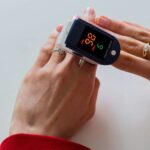By: PR Fueled
CNC machining has transformed the medical industry, enabling the creation of precise and reliable medical devices, from intricate surgical instruments to custom implants. However, it comes with unique challenges, especially given the stringent requirements of the medical field.
In this blog, we’ll explore the common obstacles faced in CNC machining for the medical industry and offer practical solutions. Whether it’s material selection, achieving high precision, or ensuring regulatory compliance, understanding these challenges and how to overcome them is key to advancing medical device manufacturing.
Material Selection and Compatibility
Challenge: Selecting materials that are biocompatible and suitable for medical applications
Selecting biocompatible materials for CNC machining in the medical industry is challenging. Medical devices must use materials safe for the human body, avoiding adverse reactions with tissues and fluids. Finding materials that meet these strict requirements and are suitable for precise machining is difficult.
Solution:
Collaborate with Material Scientists: Partner with experts to identify materials that meet medical standards and possess the needed mechanical properties.
Conduct Thorough Testing: Implement rigorous testing to ensure biocompatibility and consistent material standards.
Use Advanced CNC Machines: Employ CNC machines capable of handling diverse and hard-to-machine materials, ensuring precise and efficient machining.
Precision and Accuracy
Challenge: Achieving the high precision and accuracy required for medical devices
Achieving the high precision and accuracy required for medical machined parts is critical. Medical devices must adhere to strict tolerances and exact specifications to ensure their effectiveness and safety. Even minor deviations can lead to malfunctions or complications in medical applications.
Solution:
Invest in High-Quality CNC Machines: Purchase advanced CNC machines designed for precise medical device manufacturing.
Implement Calibration and Maintenance: Regularly calibrate and maintain CNC machines to uphold peak accuracy and prevent wear.
Use Precision Measurement Tools: Employ advanced tools to verify component accuracy, ensuring adherence to specifications and quality standards.
Regulatory Compliance
Challenge: Navigating complex regulatory requirements for medical devices
Ensuring compliance with FDA and ISO standards is crucial yet complex for medical device manufacturers. These regulations are stringent to aim device safety and efficacy, necessitating thorough knowledge and meticulous adherence throughout manufacturing of CNC machined parts for medical purposes.
Solution:
Stay Informed about Regulations: Continuously monitor FDA and ISO updates to understand and comply with evolving standards.
Implement Documentation and Traceability: Maintain thorough records of processes and materials, ensuring transparency and traceability from raw materials to finished products.
Engage Regulatory Experts: Collaborate with specialists to navigate complex requirements, ensuring compliance and mitigating regulatory risks.
Surface Finish and Sterilization
Challenge: Ensuring smooth surface finishes that are easy to sterilize
Ensuring smooth surface finishes that are easy to sterilize is crucial for medical devices. Smooth surfaces prevent bacterial adhesion and facilitate effective sterilization processes. Achieving these finishes can be challenging due to the intricate designs and materials used in medical device manufacturing.
Solution:
Employ Advanced Finishing Techniques: Use micro-machining and polishing to achieve smooth surfaces, enhancing quality and reducing bacterial buildup.
Utilize CNC Machines for High-Quality Finishes: Employ CNC machines designed for precise and smooth surfaces, ensuring consistency and meeting design specifications.
Implement Thorough Cleaning and Sterilization Protocols: Follow rigorous post-machining procedures, including validated protocols for regulatory compliance and ensuring device safety.
Cost and Time Efficiency
Challenge: Balancing cost-efficiency with the need for precision and quality
Balancing cost-efficiency with the need for precision and quality poses a significant challenge in CNC machining for the medical industry. While precision and quality are paramount for medical devices, achieving them without inflating costs or extending production timelines can be demanding.
Solution:
Optimize Machining Processes: Streamline operations to minimize waste, optimize tool paths, and maximize machine use.
Implement Lean Manufacturing Principles: Adopt lean practices to enhance efficiency, reduce inefficiencies, and promote continuous improvement.
Invest in Training and Development: Provide ongoing training to operators to boost productivity and proficiency in utilizing machine capabilities effectively.
Customization and Flexibility
Challenge: Meeting the growing demand for customized medical devices
Meeting the increasing demand for customized medical devices presents a significant challenge in CNC machining. Healthcare providers and patients often require personalized solutions tailored to specific needs, which traditional manufacturing methods struggle to efficiently deliver.
Solution:
Utilize Advanced CNC Software: Use sophisticated software for intricate designs and rapid customization to meet patient-specific requirements.
Adopt Modular Tooling Systems: Implement systems allowing quick changeovers between tasks to support agile production of diverse medical devices.
Combine Additive Manufacturing with CNC: Integrate 3D printing with CNC machining for enhanced customization, enabling complex geometries and material versatility.
Final Remarks
In conclusion, navigating challenges in CNC machining for the medical industry requires balancing precision, regulatory compliance, efficiency, and customization. By investing in advanced technology, implementing lean principles, and fostering a skilled workforce, manufacturers can ensure high-quality, compliant medical devices.
Collaboration with regulatory experts and adapting to evolving standards are crucial for maintaining safety and innovation. Overcoming these challenges drives progress in healthcare technology, meeting diverse needs effectively and advancing patient care.
Medical Disclaimer: This content is for informational purposes only and is not intended as medical advice, nor does it replace professional medical expertise or treatment. If you have any concerns or questions about your health, always consult with a physician or other healthcare professional.
Published by: Martin De Juan

















